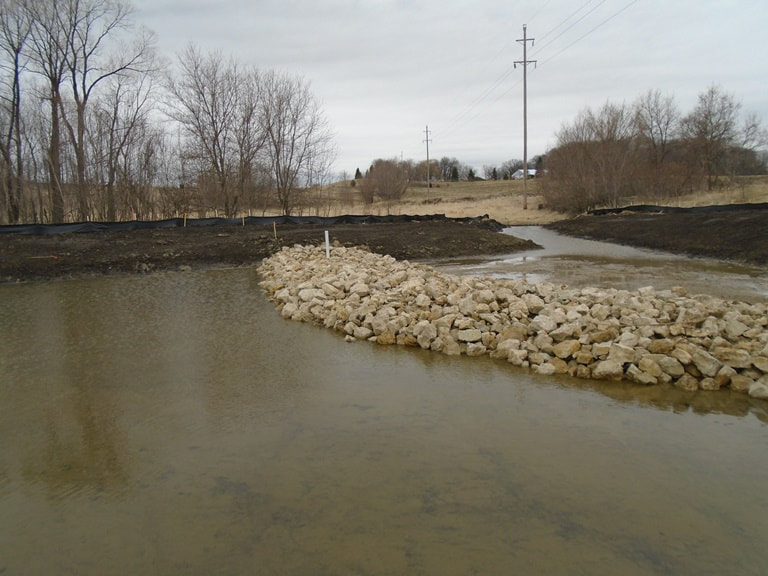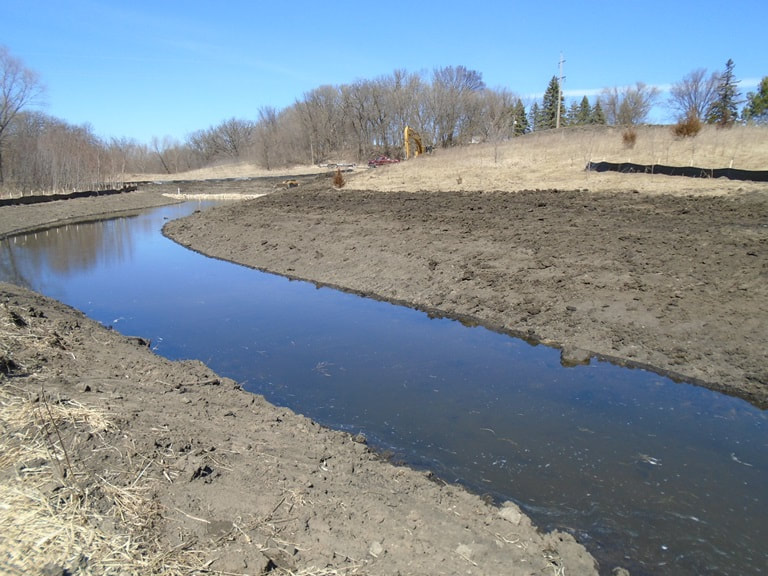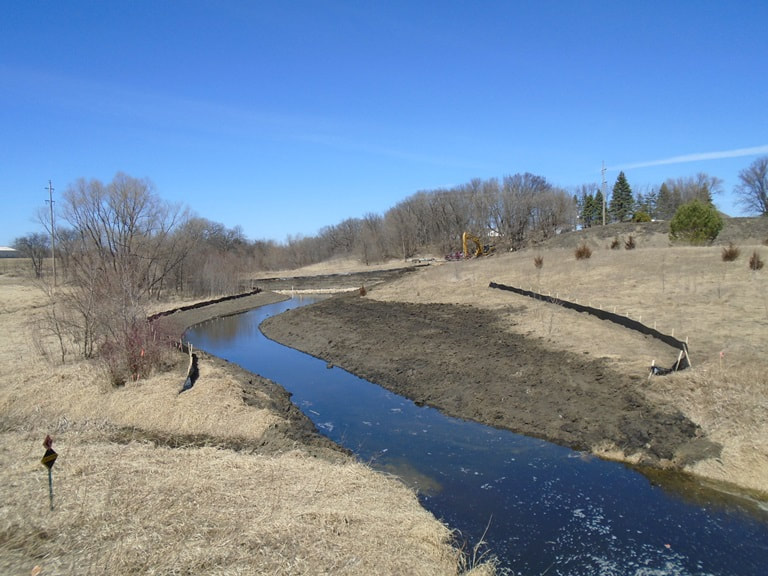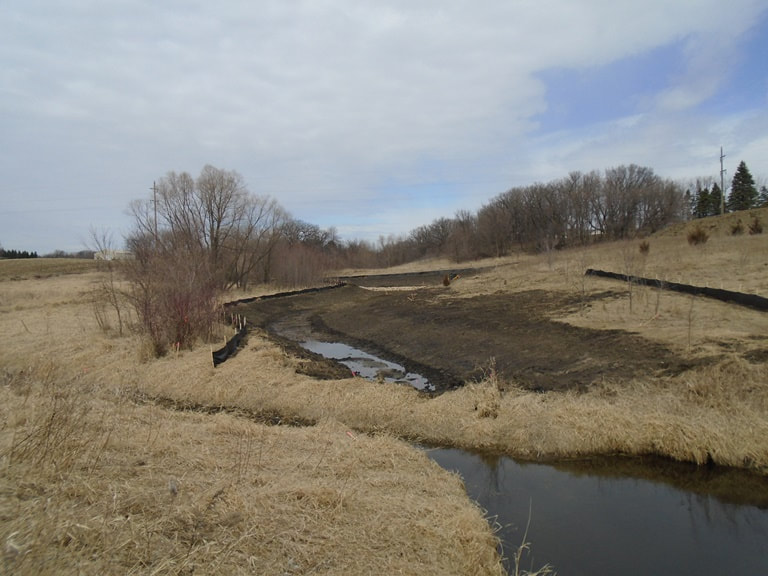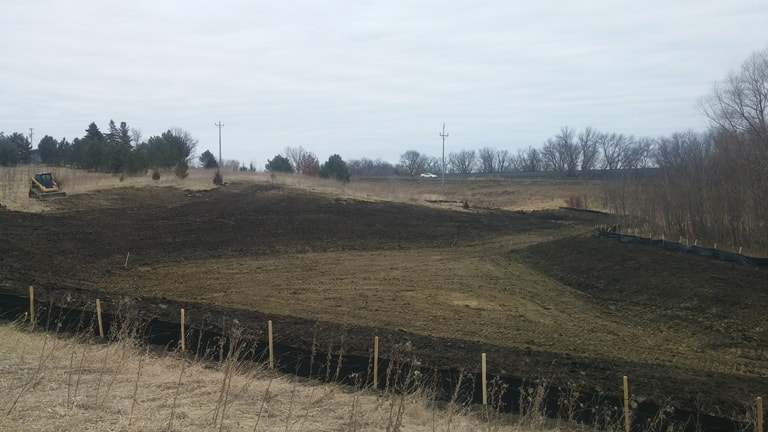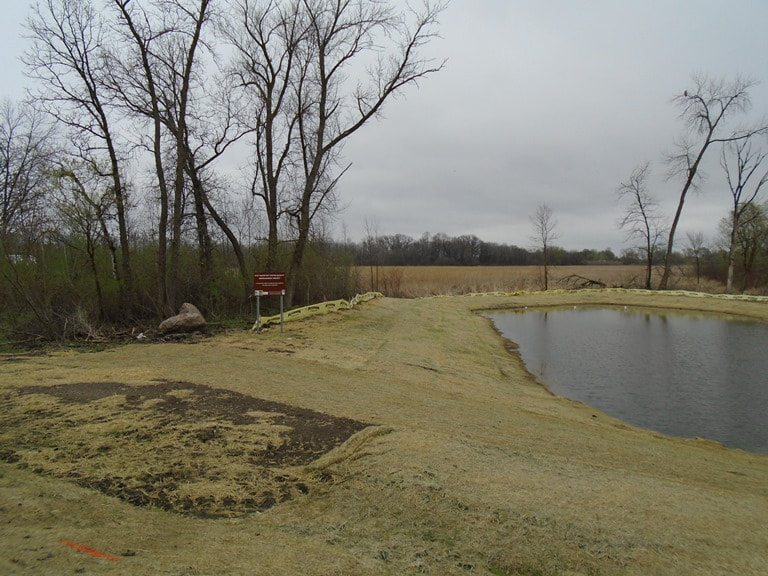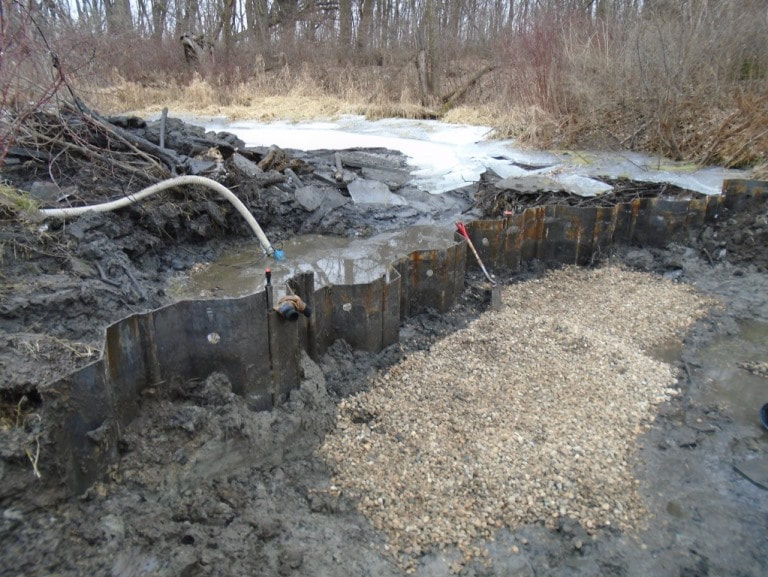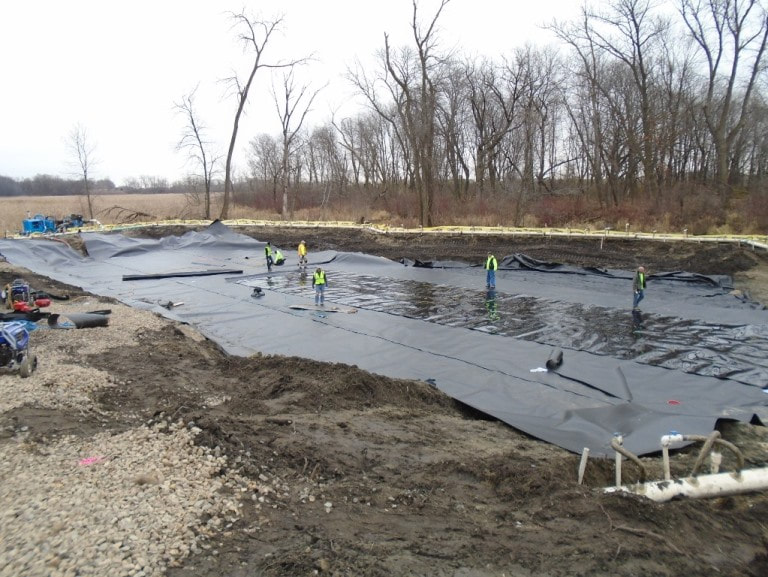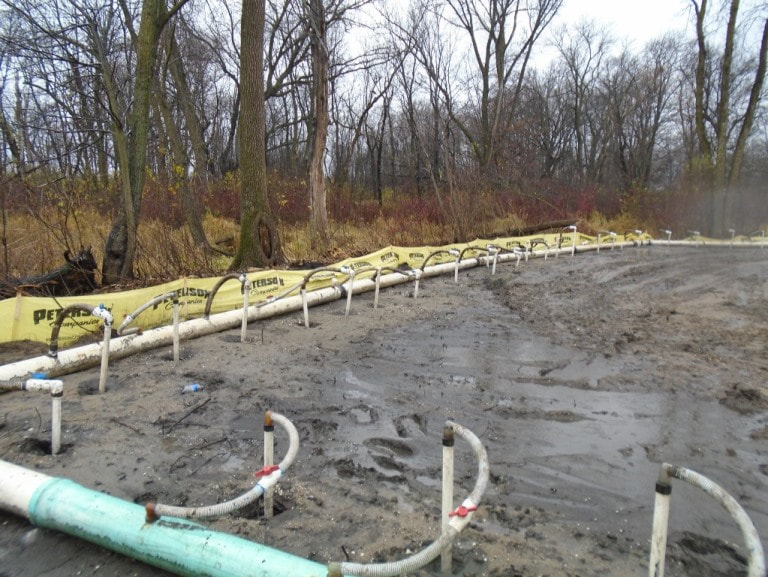|
In 2002, citizens began to notice severe algal blooms in Cedar Lake, a high value recreational lake with exceptional clarity and fisheries habitat. Those observations, coupled with a sharp rise in average summer phosphorus and chlorophyll-a concentrations in the lake raise a red flag over the future of the lake. In response, the Clearwater River Watershed District (CRWD) began an intensive monitoring program in 2003 to identify nutrient sources. Through intensive lake and watershed monitoring, the CRWD identified the major source nutrients to the lake: three nutrient-impaired shallow lakes (Albion, Henshaw and Swartout) and impaired wetlands in the upper watershed were discharging excess amounts of soluble phosphorus downstream.
In 2005-2006, the CRWD identified a suite of in-lake and watershed practices to improve water quality in both the impaired shallow lakes and Cedar Lake. In 2006, via citizen petition, the CRWD instituted Project #06-1, which resulted in the installation of rough fish migration barrier, the Segner Pond treatment system, the forming of a rough fish harvesting program from the shallow lakes and the installation of agricultural land best management practices via a cost-sharing program (learn more here. Also during this time the CRWD complete TMDLs for the three upstream lakes (approved by EPA in 2009), and the MPCA approved a Watershed-wide Implementation plan in 2009. The cost of these various elements was funded entirely by special assessments on properties benefited by the project. Also included in the initial suite of project elements were two treatment components for wetlands in the upper watershed discharging phosphorus, but these were not instituted at the time due to lack of funding. Results from this project have demonstrated a significant reduction in phosphorus concentrations entering Cedar Lake, but said concentrations remained above the target of 20 mg/L for the lake, and Swartout Lake remained impaired. In 2013, the CRWD was again petitioned by citizens to amend Project #06-1 to include the wetland treatment components originally envisioned by not instituted in 2006. The CRWD applied for and received a $277,900 Clean Water Fund grant through the MN Board of Water and Soil Resources (http://bwsr.state.mn.us/) to develop, design and install these two components. An additional $305,000 in local match was provided to fund implementation. Total project cost was $582,900. The grant is funded through the Clean Water Land and Legacy Amendment. Completed in 2016, a limestone filter berm and iron-enhanced sand filter were installed to remove soluble phosphorus currently exported from both degraded wetlands and the impaired shallow lakes. The filters are deigned to treat baseflow and up to the 1.25" rain event, targeting ~80% and ~40% of the needed watershed load reductions to Swartout and Cedar Lake (800 lbs/ yr. and 480 lbs/ yr, respectively). The filters provide maximum cost/ benefit while preserving upstream hydrology. The CRWD will monitor the filters going forward to quantify effectiveness at soluble phosphorus removal and determine maintenance needs. The project was completed due to the successful cooperation between the CRWD, the MN BWSR, the MN DNR (which allowed construction of one of the filters on the Swartout Wildlife Management Area: http://www.dnr.state.mn.us/wmas/detail_report.html?id=WMA0052300), the Cedar Lake Conservation Club (http://cedarlakecc.org/), and local property owners who contributed funding via special assessments. |
- About
-
Projects
- Carp Management 2023-2024
-
Clearwater River Chain of Lakes (1980) Restoration Project
>
- Annandale Wetland Treatment System
- Kingston Wetland Feasibility Study and Restoration Project
- Lake Augusta Aeration Project
- Lake Augusta Erosion Control Project
- 1980 Monitoring Program
- Non-Point Source Pollution Abatement (TCCP) Project
- Upper Lakes Aeration and Mechanical Fish Removal
- Watkins Wetland Isolation Project
- Watkins Wetland Treatment System
- Replacement Projects for Aerators
-
Total Maximum Daily Load (TMDL) Implementation Projects
>
- Alternative Tile Intake Project
- Clearwater River Channel Stabilization (CCM Riparian) Project
- Clearwater River Restoration & Protection Phase II Project
- City of Kimball Stormwater Treatment Phase II
- Targeted Fertilizer Application Reduction Project
- Watkins Area Stormwater Treatment Project
- Willow Creek (Kimball Phase I) Stormwater Retention / Reuse Project
- Potential Future Implementation Projects
- Bass Lake AIS Management
- Clear Lake North V-Notch Weir
- Clear Lake South Notch Weir
- Clear Lake IESF
- Cedar Albion Swartout Henshaw Project #06-1 >
- Clearwater Lake Milfoil Treatment
- CRWD Bog Control Projects
- Communal Sanitary Sewer Systems >
- Lake Augusta Aquatic Invasive Species (AIS) Project
- Lakes Louisa & Marie Aquatic Invasive Species (AIS) Project
- Norton Avenue Basin
- Ostmark Basin
- Pleasant Lake Outlet Control Structure
- Cedar Lake Aquatic Invasive Species (AIS) Project
- School Section Lake Outlet Control Structure
- Wastewater Treatment Task Force
- Programs
- Resource Library
- How You Can Help
- Contact
|
This page is maintained by CRWD Board Managers.
© Copyright 2020 |
Board Meetings
Third Wednesday of the month at 6pm Special and emergency meetings may be called. Such meetings will be properly notice per MN Statutes. |
Clearwater River Watershed District
93 Oak Avenue South, Suite 5 Annandale, MN 55302 Mailing Address:
3235 Fernbrook Ln N Minneapolis, MN 55447 |
Website created by Skol Marketing









